Basically, I have this code on a Bluno M3 Arduino:
#define MSG_LEN 2
unsigned char pixel;
char buff[MSG_LEN];
int i;
void setup() {
Serial4.begin(9600);
pixel=0xDD;
}
void loop() {
if(Serial4.peek() == -1){
while(Serial4.available() < MSG_LEN);
Serial4.readBytes(buff, 2);
if(buff[0] == 0xC8 && buff[1] == 0x00){
//send image
Serial4.write(0xC7); //send Image ACK
Serial4.flush();
for(i=0;i<4800;i++){
Serial4.write(pixel);
Serial4.flush();
}
for(i=0;i<MSG_LEN;i++){
buff[i]=0xFF;
}
}
}else{
while(Serial4.available()>0){
Serial4.read();
}
}
}
I'm using a PL2303 USB-Serial Adapter, Bluno M3 arduino, CoolTerm serial monitor.
And if you check this image:
You can see that in the data this code sends, the 0xC7 byte is mixed in with the 0xDD bytes (so called pixel bytes)
Why does that happen?
